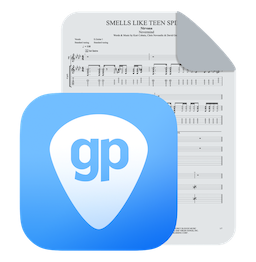
8 Jazz Licks Every Guitarist Should Know – Matt Warnock
- Jazz Lick 1 – “Jazzy Double Stops”
- Jazz Licks 2 – “Classic Jazz Blues Sax”
- Jazz Lick 3 – “Wes Montgomery Blues Scale”
- Jazz Lick 4 – “Joe Pass Chromatic Blues”
- Jazz Lick 5 – “Charlie Christian Major Blues Line”
- Jazz Lick 6 – “Maj7 Bebop Lick”
- Jazz Lick 7 – “Sidestepping m7 Arpeggios”
- Jazz Lick 8 – “Essential ii V I Line”
- Take Your Jazz Playing Further
Jazz is one of those musical genres that many guitarists check out, but get stuck when it comes to knowing exactly how to sound jazzy in their own playing.
If you’ve checked out jazz guitar before today, you’ve probably spent time learning countless modes, arpeggio shapes, and other technical items on the fretboard.
While learning how to play scales, chords, and arpeggios is important, learning how to play jazz licks is the most direct way to bring a jazz sound to your playing.
In this lesson, you’ll study 8 essential jazz guitar licks that you can apply to your blues and rock solos when looking to bring a jazz vibe to your phrases.
“8_Jazz_Licks-Matt_Warnock.gpx”
(click on the image to download the Guitar Pro file)
If you’re new to jazz, start with the first lick and work your way down from there, as these licks start with the most “bluesy” and continue down to the more “outside jazz” sounds from there.
Lastly, each lick is written in one key, or over one chord, so start in that key when first learning how to play these jazz licks on guitar.
From there, you can transpose these licks to other keys and chords as you take these ideas further in your jazz guitar, and soloing in general, studies.
If you have any questions about these licks or the concepts behind any of these licks, post your thoughts in the comments section below and I’ll be glad to help out.
Note: You need Guitar Pro 6 to view the musical examples. If you haven’t checked out GP6 yet, you can download the trial version here.
Now, on to the jazzy licks!
Jazz Lick 1 – “Jazzy Double Stops”
This first lick uses double stops, two notes played together, to give a piano sound to the line.
Played over an A7 chord, you can also use this lick over any A major chord in your solos when you want to bring a jazz-blues sound to your lines.
The lick is constructed with notes from the A Mixolydian scale, as well as one blues note, the C on the 3rd beat of the second bar.
Though it’s a short lick, and sounds pretty easy to play, getting it to sound smooth can take some time in the practice room.
Spending time on the transitions between double stops will help bring a smooth flow to this lick, which is just as essential to the sound as the notes themselves.
Jazz Licks 2 – “Classic Jazz Blues Sax”
Jazz guitarists love to steal, I mean borrow, licks from other instruments, especially jazz saxophonists.
This lick is one of the best examples of a sax line in the style of jazz great Hank Mobley that’s been adapted to sit cleanly on the fretboard.
Built with the G blues scale, this line works great over G7 and G major chords, or any chord in a G blues song that you’re soloing over.
If you want to get a true sax sound with this line, give the second last note, Bb, a bit of a pull to imitate the “growl” jazz saxophonists get in their bluesy lines.
Jazz Lick 3 – “Wes Montgomery Blues Scale”
When people hear the words “jazz guitar”, the name that most come to mind is Wes Montgomery.
Because he’s such a giant in the genre, no study of jazz guitar licks would be complete without digging into at least one Wes Montgomery line.
This B7 phrase, which can also be used over B major chords and any chord in a B blues, features Wes’ characteristic legato to create a slippery jazz blues lick.
When learning this line, try to get the notes as legato, and connected, as possible in order to sound as close to Wes as possible.
If you want to take this jazz guitar lick further in your studies, you can repeat this line to create a four-bar phrase, which is something Wes enjoyed doing in his solos.
Jazz Lick 4 – “Joe Pass Chromatic Blues”
Another jazz guitarist that ranks among the best in the business is Joe Pass.
This lick is reminiscent of the chromatic runs that Joe used when soloing over 7th chords and major chords when he wanted to bring a bluesy sound to his lines.
Written over a G7 chord, you can also play this line over G major chords in your solos.
The line is built by combining the notes of the G triad, G, B, and D, with notes from the G minor blues scale, Bb, C, and C#.
Because this lick uses notes from the G triad, you’ll need to play it only over G or G7 chords when adding it to a G blues or rock-based progression.
If you want to bring it to other chords in the progression, such as the IV chord C7, you’ll need to start the lick on the note C to avoid any clashes in your line.
Playing licks over each chord, transposing them to fit the changes, is something every jazz guitarist needs to tackle in the practice room.
If you’re new to playing one lick per chord, work on applying this line to the three chords in a G blues first, G7, C7, and D7, before taking it to other chords from there.
Jazz Lick 5 – “Charlie Christian Major Blues Line”
This line is found in the playing of many jazz guitarists, and I’ve always associated it with Charlie Christian, as it has the major blues sound he loved in his solos.
Built with the A major blues scale, this line can be used over an A major or A7 chord in your solos.
Though it’s not as bluesy as the licks based around the minor blues scale, this line is helpful when you want to keep a major feel, but also want a touch of blues in your solo at the same time.
Again, because this lick has the triad built into it, A, C#, and E, you’ll only be able to play this line over A chords.
If you want to play it over other chords, such as the IV chord in an A blues D7, you’ll need to begin the line on the note D in your playing.
Jazz Lick 6 – “Maj7 Bebop Lick”
Now that you’ve looked at a number of scales and triad-based lines, it’s time to add an arpeggio-based lick to your vocabulary.
This line is built around the Gmaj7 arpeggio over a G chord, or Gmaj7 if you find one in your playing, with a chromatic note thrown in at the end for good measure.
This note, D#, is a chromatic passing note, which means that it connects two diatonic notes, in this case, D and E.
Though it falls outside the key of G major, because it acts as a connector, this passing note sounds great over the chord and is the most interesting part of the lick.
Chromatic passing notes are an essential jazz guitar sound.
Therefore, if you’re interested in learning more about jazz, you’ll want to spend time learning more about passing notes in your playing.
Jazz Lick 7 – “Sidestepping m7 Arpeggios”
For those who are looking for a bit more tension in your solos, you’ve come to the right place.
This lick uses an “outside” arpeggio to create tension in the second half of the first bar, before resolving that tension at the start of the third measure.
The outside arpeggio is an Fm7, being played over the underlying Bm7 chord.
When you see one chord and play another in jazz, this is called chord substitution, which is used to create tension in your solos against the chords played by the band.
The key to playing this outside arpeggio, which is a tritone away from the Bm7 chord, is to resolve it properly.
Using tension in any genre of music is cool, as long as you resolve it.
There’s a fine line between sounding hip and sounding like a mistake, if you can find that line, then licks like this can go a long way in your solos.
If you go outside but can’t find your way back inside the chord changes, your solo will fall apart.
So, take your time with this lick and concept, practice it at home first until you’re fully confident with it, and only then try taking it to a jam or gig situation.
Jazz Lick 8 – “Essential ii V I Line”
No study of jazz guitar would be complete without looking at a ii V I line.
The ii V I chord progression is the most famous, and most used, progression in jazz.
Think of it as the IV V I of jazz guitar, the “Louis Louis” if you will of jazz, and it’s found in just about every classic jazz standard in the genre in one form or another.
Because it’s so popular, having a few ii V I licks under your fingers will go a long way if you ever get a chance to jam on a jazz tune at a gig.
If you’re looking to explore jazz further, beyond applying jazz licks to blues and rock situations, learning this lick in 12 keys is a great place to start.
It’ll help you get your fingers around a classic jazz lick, and get the sound of the ii V I progression into your ears at the same time.
There you have it, 8 jazz licks that you can use in your blues and rock solos over major, minor, and 7th chords when you want to bring a jazz vibe to your lines.
Next time you want to spice up your solos, throw in a line from this lesson, it’ll turn some heads, and push your improvisations in new and exciting directions.
Enjoy these jazzy licks!
– Matt Warnock
mattwarnockguitar.com
Take Your Jazz Playing Further
Download Matt’s free 84-page “Beginner’s Guide to Jazz Guitar“.
Want to learn how to play jazz guitar but don’t know where to start?
Check out “30 Days to Better Jazz Guitar” and join the thousands of players who have learned to play jazz with Matt’s proven method.
>> Guitar Pro readers can get a special 33% off the list price by entering “gp6” then “update cart” at checkout.
Leave a comment
Your email address will not be published.
| Title | Artist | |
|---|---|---|
While My Guitar Gently Weeps

|
The Beatles | |
| Flowers | Miley Cyrus | |
| Country Roads | John Denver | |
You Shook Me All Night Long

|
AC/DC | |
Blowin' In The Wind

|
Bob Dylan |




10 Comments
Hi Thomas
The links to “Beginner’s Guide to Jazz Guitar“. and don’t seem to work error message HTTP Status: 404 (not found)
Thanks ‘
James
Hi James, here is the new link: https://www.mwgcourses.com/p/beginners-guide-to-jazz-guitar
You can directly ask the teacher to see if that’s the good place to get the free guide. Thanks.
Hi
Sorry, what does mean “H” and “P” over the notes?
Thank you!
Hello Ferdinand, it’s Hammer on and Pull off. In the “Stylesheet” section, click on the “Notation” menu and you can display or not these infos in your music score: “Add H/P symbol for HO/PO effects”.
wow i luv dis
its a motivation to continue in this jazz, blues trend of music
Beginner’s Guide To Jazz Guitar link doesn’t work.
Hello Steve, please contact Frank for help.
Hi Matt. With the guitar pro 6 test does not allow you to perform certain functions including opening the file with the exercises which I can not open it.
You can send in pdf?
Matt,
I downloaded GP6 Demo three times and each time Win10 says the file is corrupt. Any suggestions?
Thanks,
Dave Williams
Hello Matt, please contact our support for help: https://support.guitar-pro.com/hc/en-us/requests/new